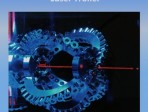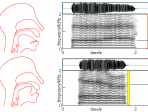 00:11:00
00:11:00
Human Sound
Sound is produced in the larynx; filtering it in the vocal tract produces formants and phonemes. The acoustics, mechanics and some neurobiology of hearing. Pitch perception.
More details | Watch now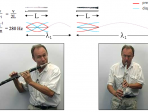 00:09:00
00:09:00
Standing waves
Reflecting waves gives standing waves, which can be resonances. Standing waves on strings and in pipes and plates.
More details | Watch now 00:08:00
00:08:00
Interference and consonance
Superposing waves with different frequencies gives beats and Tartini tones. Removing beats gives consonance. Tuning consonances gives temperament.
More details | Watch now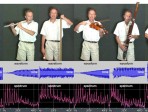 00:09:00
00:09:00
Quantifying sound
Frequency, amplitude, envelope and spectrum affect pitch, loudness and timbre. All are discussed and quantified here.
More details | Watch now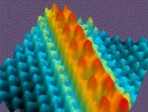 00:17:00
00:17:00
How can we see atoms ?
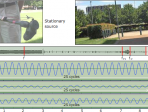 00:10:00
00:10:00
The Doppler effect
Moving either source or receiver produces a frequency shift called the Doppler effect, which we measure and analyse.
More details | Watch now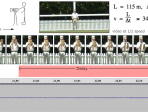 00:09:00
00:09:00
Sound
Sound is a longitudinal wave of variations in pressure and density. We derive and measure its speed.
More details | Watch now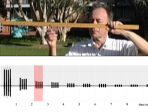 00:06:00
00:06:00
Travelling waves II
The wave equation and its physical origin. Power in a wave and its relation to intensity in radiation.
More details | Watch now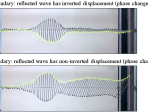 00:07:00
00:07:00
Travelling waves I
In an extended medium, inertia and a restoring force can lead to waves, which reflect at boundaries, either erect or inverted.
More details | Watch now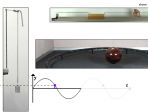 00:09:00
00:09:00
Oscillations
Inertia and restoring forces can, with low friction or damping, lead to oscillations and resonance. We analyse the mechanics of vibrations.
More details | Watch now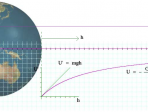 00:12:00
00:12:00
Gravity
The inverse square law explains planetary motion - and apples falling. Newton's law, measuring G, calculating orbits.
More details | Watch now 01:03:00
01:03:00
Plastic fantastic: electronics for the 21st century
Plastics - or, more correctly, polymers have traditionally been used by the electronics industry as passive materials. Now however, new types of polymers have been discovered which behave as semiconductors. For example, they can emit light when subje....
More details | Watch now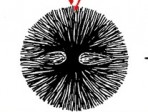 01:00:00
01:00:00
The mesoscopic world – from plastic bags to brain disease.
Structures looking broadly the same in the optical microscope are found in starch granules within plants, in polythene bags and in sections of diseased brain tissue. Athene Donald explores structural similarities between different assemblies of polym....
More details | Watch now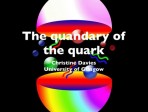 01:12:00
01:12:00
The quandary of the quark
99.9% of the visible material in the universe is made of quarks and yet we know surprisingly little about them. Professor Davies describes how the properties of the quark are now being revealed, and the implications that this will have for our unders....
More details | Watch now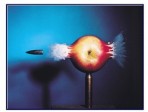 01:08:00
01:08:00
Optical science in the fast lane
In this talk Wilson Sibbett introduces some of the underlying concepts that have enabled us to develop practical ultrafast lasers and a selection of applications that range from the fundamentals of chemical bonding to weapons decommissioning!
More details | Watch now 00:56:00
00:56:00
Einstein’s legacy as scientist and icon
What might 'new Einsteins' achieve in the 21st century? Science offers more intellectual challenges than ever, but is a less individualistic enterprise. Technology offers imense opportunities, but poses threats and ethical dilemmas. Can scientists re....
More details | Watch now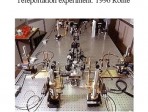 01:12:00
01:12:00
What is quantum non-locality?
In his talk Sandu will explain this quantum non-locality and present some of the uses of non-locality for quantum information and communication - strange effects such as teleportation - and will discuss the implications of non-locality for understand....
More details | Watch now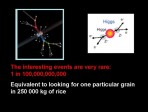 00:41:00
00:41:00
Particle Physics and the Mysteries of the Early Universe
Dr Cristina Lazzeroni, a Royal Society University Research Fellow from the University of Birmingham, reveals the secrets of the world's largest accelerator, the Large Hadron Collider and how the LHC experiments hope to answer big questions about the ....
More details | Watch now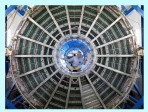 01:10:00
01:10:00
The LHC: largest experiment and smallest particles
The LHC is the most powerful particle accelerator ever built. It is capable of recreating the very energetic conditions last seen in the universe a billionth of a second after the Big Bang, and allows particle physicists to study the fundamental ingr....
More details | Watch now 01:16:00
01:16:00
Every picture tells a story
We will look at the role of pictures and images in the development of science. From the first graphs and illustrated books to Molscript, the influence of the first pictures of spiral galaxies on Van Gogh's 'Starry Night', to the artistic resonances o....
More details | Watch now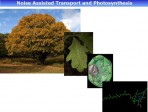 01:03:00
01:03:00
Taming the Quanta
Devices are now reaching the realm where individual structures are made up of only a few atoms so that quantum mechanics, the theory of the very small, is playing a crucial role. The inevitable quantum fluctuations produce noise which was initially e....
More details | Watch now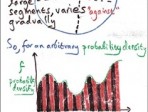 01:01:00
01:01:00
The uses of infinity: a philosopher looks at emergent phenomena in physics
Emergence, and its contrary, reduction, are buzz-words in both physics and philosophy. Both physicists and philosophers disagree about the extent to which we can understand large-scale or complex phenomena in terms of their microscopic parts.
More details | Watch now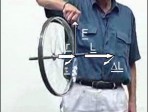 00:10:00
00:10:00
Rotation
Torques produce angular acceleration, moment of inertia 'resists' it. Rotational kinetic energy and angular momentum.
More details | Watch now